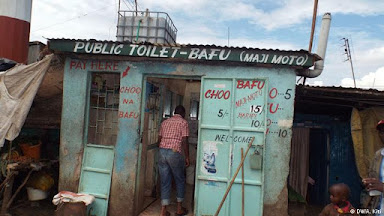Implications of gender-based violence on women and their development
Inequitable access to safe water and sanitation can have detrimental effects on the safety and lives of women. Women’s reliance on water and sanitation is unfortunately, closely tied to gender-based violence (GBV). Gender based violence is a silent epidemic- victims of this are hesitant to reveal their experiences due to stigmas, lack of support or even lack of awareness, and acceptance of violence as part of everyday life. The problem is most prominent in areas of Sub-Saharan Africa where socioeconomic status, gender norms, education, climate and infrastructures all pose barriers to the safety and development of women.
Gender violence and its link to sanitation
Gender-based violence can take place in both public or private spheres, but is almost always exacerbated by poor access to resources and poverty. It can take the shape of sexual violence, rape, harassment, sexploitation or even discrimination and psychological violence. Forms of violence are often exacerbated at different scales and temporalities and further reinforced by power and structural processes. The lack of appropriate and regulated sanitation services in urban informal settlements reproduce the violence women experience in their everyday lives. Women, who have suffered from GBV, are prone to losing their livelihoods and productivity, which further impoverishes them. Both the consequence and the cause of GBV is poverty- violence inhibits women from living to their full potential and reduces their ability to make choices about their economic pathways.
Infrastructure and GBV
Due to cultural norms and existing infrastructures, most informal homes in Nairobi, Kenya do not have toilets at home and instead people use public toilets or latrines. This means that some women may have to walk to access toilets or may have to perform this walk at night, due to the stigma of open defection and menstruation. According to the study by Amnesty International (2010), most women must walk more than 300 metres from their homes to access latrines. Poorly lit sanitation services and walkways or the closure of some public toilets at night makes women extremely vulnerable to GBV. During times of drought or flood, these journeys are often even longer, making women and girls susceptible to GBV. GBV has a direct effects on the wellbeing, dignities and health of women. This affects how women practise everyday activities, affecting their sense of self.
Water vending and sexploitation
Informal water vendors can often control water access where government provided water is unreliable, for example in urban informal settlements. The burden of water collection is a woman's issue, meaning they must interact with said vendors, which often pray on the economic vulnerability of women and girls. Some vendors may charge high prices for water, so when women cannot afford this, vendors offer exchanges of sexual acts and favours in exchange for water. In a province of Harare, Zimbabwe many girls are forced into prostitution or sex to pay for water and water services. There is a clear gender and structural power imbalance between men, who control water resources and women's undisputed necessity of these resources.
Access to resources and the right to exercise choices in dignity are the underlying factors that will enable women to develop. Without appropriate sanitation and water access, women remain vulnerable to gender based violence and its effects on life, economic output and poverty. These procedural injustices simply reinforce GBV, therefore sanitation is not just about water but can also protect and enable women to live their lives safely, humanely and with dignity and pride. Gender justice must be achieved in order for women to be a part of effective development.



Do all interactions with water vendors result in exploitaiton oge weomen who are economic vulnerable? And is it possible that the GBV is a result of a broader structural violence that underscore access to resoruces with water being a hotspot? These were some questions that emerged while reading through the post. The post is well presented, and focus on GBV is nice. However, I'm tempted to think that there is more to Amnesty International 2010 report on insecurity and indignity in Nairobi slum. Also, embed the refence link where possible.
ReplyDeleteThanks for your comment Clement. I agree that GBV is indeed a result of broader structural violence and water resources are easy ways to exploit this weakness. The interactions between women and water vendors are all different, often based on the woman's age, economic status and who they are within their communities. From my research, I have found that it is most often women and girls that are economically vulnerable that struggle with this issue more than others. This is not to say that exploitation does not occur to others in different situations but this is what I have found. I hope you found this answer useful :)
DeleteThank you for explaining the pertinent issue of gender-based violence on your blog. Do you know of any solutions in place that aim to dismantle paying for water from water vendors through prostitution?
ReplyDeleteThanks for your comment Stephanie! One solution to tackling paying for water through sexual acts could be providing appropriate infrastructures that can be accessed equitably and at a cheap price. Subsidised water could be a great start to avoiding interactions with water vendors and creating more safe spaces for women. I hope this answered your question.
Delete